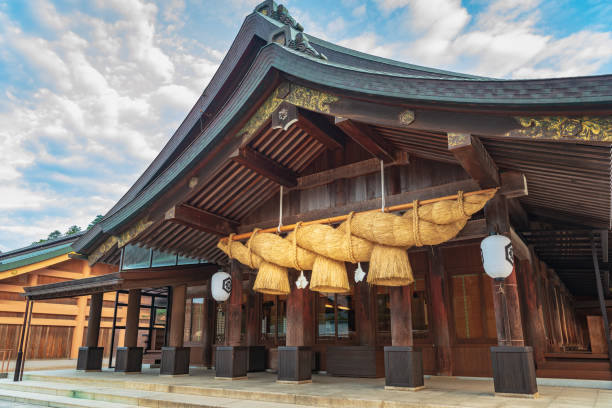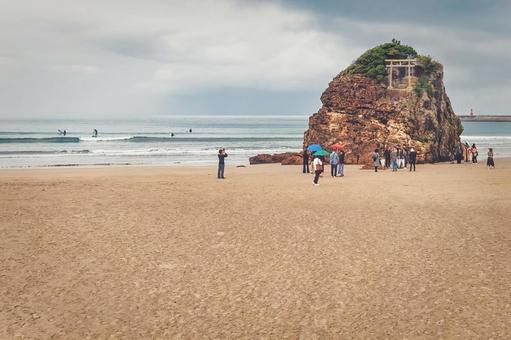Izumo Enmusubi Airport, with its name meaning “binding bonds,” sets the tone for travelers’ romantic quests. While “enmusubi” refers to all kinds of connections in life—like with family, friends, and colleagues—it’s most often associated with romance. This connection is felt as you arrive, walking past a statue of Okuninushi, the “great matchmaking god,” and a rack of ema (wooden plaques) where travelers inscribe their wishes for love.
Though not everyone comes to Izumo in search of romance, many do. The city’s allure stems from Izumo Taisha, thought to be Japan’s oldest shrine, dedicated to Okuninushi, the god of enmusubi. Here, people pray for the creation or blessing of their romantic relationships.
Izumo, located on the Sea of Japan in Shimane—Japan’s least populated and least-visited prefecture—can only be reached by air, making it one of the few cities in Japan with limited access by bullet train. Izumo Taisha, a revered “power spot” where the spiritual energy of nature is believed to grant luck and love, draws millions of visitors. More than seven million came in 2023, including hundreds of couples who got married at the shrine.

Beyond the shrine, romantic-themed itineraries guide visitors through Izumo and the wider San’in region, featuring places like Yaegaki Shrine, known for a pond that predicts relationship outcomes, and a pleasure boat with a “matchmaking bell” that calls upon the gods. The Umi Shrine, which focuses on severing bonds, offers a more unconventional side to the enmusubi tradition.
Izumo’s natural beauty, with its dramatic coastline and stunning sunsets, enhances the area’s romantic aura. Yet the heart of romance lies at Izumo Taisha, where singles pray for love, and couples seek blessings for their relationships. Many write wishes on ema, hoping to reach Okuninushi directly.
In November, during Japan’s lunar calendar’s 10th month, when the gods gather in Izumo, the energy intensifies. This period, known as Kami-ari-dzuki, sees eight million kami (gods and spirits) arrive from across Japan to decide human relationship fates. The ceremonial arrival is marked by bonfires, a procession, and feasts, with the kami indulging in local sake—though some tend to linger past their official departure date.
During my visit to Izumo Taisha, I followed the customs, dropping a five-yen coin into the offering box (considered lucky for relationships), clapping four times—twice for myself and twice for my partner—and making a wish. Nearby, I read the heartfelt wishes written on ema, from general prayers for love to more specific hopes like getting married within three years.
The desire for connection here contrasts with Japan’s well-publicized declining marriage rates. In the same month, Tokyo launched a matchmaking app to combat low birthrates, prompting a reflection on whether modern matchmaking apps could be replaced by more spiritual approaches.

Hiroko Yoda, a Tokyo-based author on Japanese spirituality, explains that belief isn’t the key factor in Japan’s spiritual practices. People visit Izumo Taisha out of curiosity, a personal need, or simply because it’s a well-known place—without feeling pressured into belief. Spirituality in Japan is not about dogma, she says, but about inclusivity. Whether you pray for love or try an app, both paths are equally valid in Japanese culture.
Izumo Taisha’s reputation as a romantic haven is largely a result of tourism promotion, but Yoda appreciates its playful spiritual aspects. She notes that “enmusubi” encompasses not just romantic connections, but all meaningful relationships, creating an invisible web of bonds that bring people together in ways they may not expect, fostering connections across all aspects of life.






















